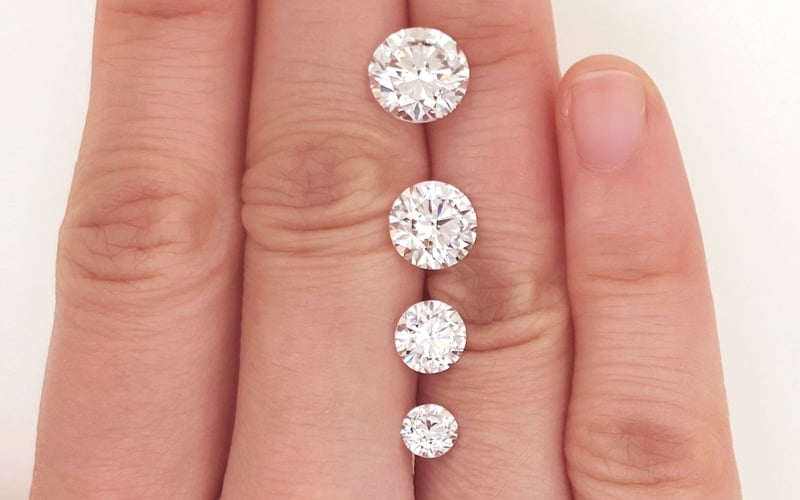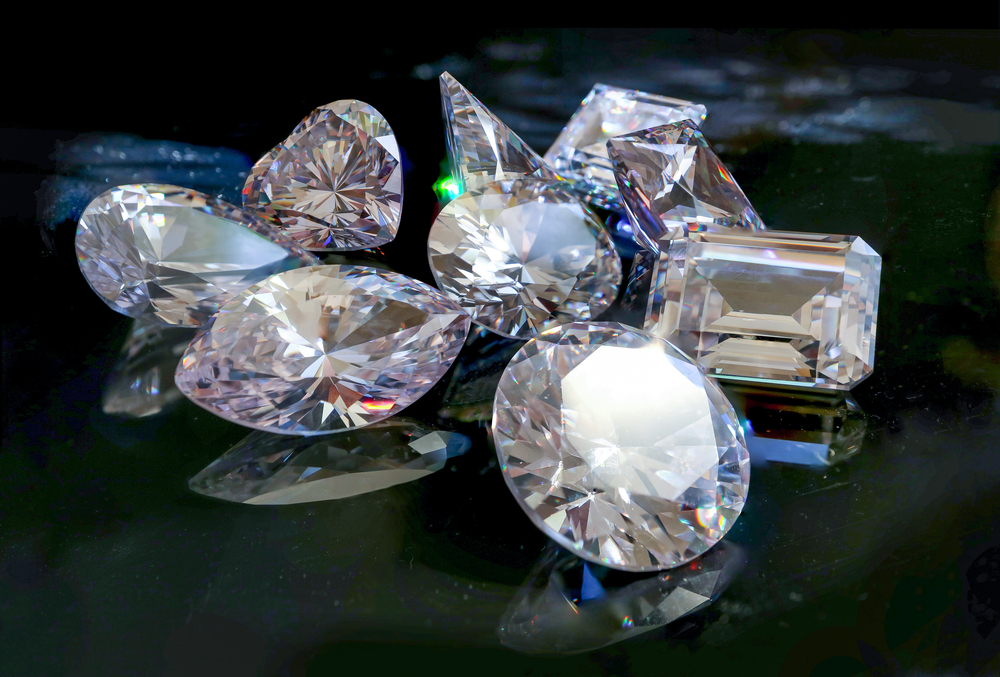
When shopping for a diamond, whether for an engagement ring, pendant, or any fine jewelry piece, understanding the Diamond 4C chart is essential. It’s the global standard used to assess a diamond’s quality. The “4Cs” stand for Carat, Cut, Color, and Clarity — four key elements that influence a diamond’s beauty and value. Let’s explore what each of these means and how the diamond 4C chart helps you make an informed purchase.
What Is the Diamond 4C Chart?
The Diamond 4C chart is a tool created by the Gemological Institute of America (GIA) to offer a standardized method of evaluating diamonds. It breaks down a diamond’s quality into four measurable characteristics:
-
Carat (weight)
-
Cut (how well it reflects light)
-
Color (how colorless the stone is)
-
Clarity (purity and internal features)
Understanding how these four elements interact allows buyers to select diamonds that align with their preferences and budgets.
Carat: The Weight of the Diamond
The first “C” in the diamond 4C chart is Carat, which refers to the diamond’s weight — not its size, although the two are often related. One carat equals 200 milligrams. A larger carat weight usually means a more expensive diamond, but weight alone doesn’t determine a diamond’s worth.
Diamonds with higher carat weights can appear more impressive, but if the cut, clarity, and color are subpar, they might not shine as beautifully as smaller stones with superior quality.
Common carat sizes on the diamond 4C chart include:
-
0.25 ct – Subtle and dainty
-
0.50 ct – Classic and affordable
-
1.00 ct – Popular engagement size
-
2.00+ ct – Considered luxury
Cut: The Sparkle Factor
Cut is arguably the most critical element in the diamond 4C chart. It doesn’t refer to the shape (round, oval, princess, etc.) but rather to how well the diamond’s facets are cut and polished.
A well-cut diamond will reflect light brilliantly, creating that famous sparkle. Poorly cut diamonds, no matter their color or clarity, can look dull.
The diamond cut grading scale includes:
- Excellent
- Very Good
- Good
- Fair
- Poor
A diamond with an Excellent Cut rating will reflect nearly all light that enters it, making it appear more brilliant and lively.
Color: The Whiteness of the Diamond
In the diamond 4C chart, Color measures how colorless a diamond is. The GIA scale ranges from D (colorless) to Z (light yellow or brown). The closer to D, the rarer and more expensive the diamond.
Diamond 4C chart color grades:
-
D–F: Colorless (Most valuable)
-
G–J: Near Colorless (Slight tinge but still white)
-
K–M: Faint Color (Noticeable warmth)
-
N–Z: Very Light to Light Color
For most buyers, diamonds in the G-H range offer excellent value — they appear white but cost significantly less than D-F diamonds.
Clarity: How Clean Is the Stone?
Clarity evaluates the presence of inclusions (internal flaws) and blemishes (surface flaws). Most man made diamonds have tiny imperfections, but they’re often invisible to the naked eye.
The diamond 4C chart clarity scale includes:
-
FL (Flawless): No inclusions or blemishes under 10x magnification
-
IF (Internally Flawless): No internal flaws, minor surface blemishes
-
VVS1–VVS2: Very, Very Slight Inclusions (extremely minor)
-
VS1–VS2: Very Slight Inclusions (small and hard to detect)
-
SI1–SI2: Slight Inclusions (visible under 10x magnification)
-
I1–I3: Included (visible to the naked eye)
A diamond with VS2 or SI1 clarity can offer the best mix of beauty and value, especially when inclusions are well-placed and do not affect brilliance.
Diamond 4C Chart Summary Table
| 4C | What It Measures | Grading Scale |
|---|---|---|
| Carat | Weight of the diamond | Measured in carats (e.g., 0.5 ct, 1.0 ct) |
| Cut | Light performance and brilliance | Excellent, Very Good, Good, Fair, Poor |
| Color | Degree of colorlessness | D (colorless) to Z (light color) |
| Clarity | Presence of internal/external flaws | FL, IF, VVS1-VVS2, VS1-VS2, SI1-SI2, I1-I3 |
How to Use the Diamond 4C Chart When Shopping
When you’re selecting a diamond, the diamond 4C chart becomes your best friend. But remember — it’s about balance. For example:
-
If sparkle matters most to you, prioritize cut.
-
If you’re after size, you might accept lower clarity or color to afford a higher carat.
-
If you want a diamond that looks white but costs less, aim for G-H color with excellent cut.
Use the chart to determine what matters most based on your priorities and budget.
Lab Grown Diamonds and the 4C Chart
Interestingly, the diamond 4C chart applies equally to lab grown diamonds. These stones are chemically identical to natural ones, and they’re graded using the same 4C standards by certified labs like GIA and IGI.
Many consumers opt for lab grown diamonds to get a larger or higher-quality stone for the same price as a smaller mined diamond — all without sacrificing the brilliance or longevity.
Why the Diamond 4C Chart Matters
Choosing a diamond is both an emotional and financial investment. The diamond 4C chart gives you clarity (pun intended) and confidence. Instead of guessing, you have a reliable standard that ensures transparency and fairness when comparing stones.
Even if two diamonds appear similar, their 4C ratings could reveal a significant difference in value and beauty. Always ask for a grading certificate from a reputable lab to back up any claims.
Final Thoughts
In a world full of sparkle and shine, knowledge is your greatest asset. The diamond 4C chart helps you understand what makes one diamond more valuable than another. Whether you’re buying a traditional mined diamond or a lab-created one, mastering the 4Cs ensures you get the best brilliance, beauty, and value for your budget.
So next time you see a stunning gem in a jeweler’s case, remember — its true worth lies in what the 4C chart says. Happy diamond hunting!





